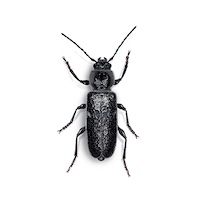Should I buy a house with beam damage from insects?
Question: I was looking at a house (in Jackson, MS) that had beam damage in the basement from some type of insect. I had a friend look at it, and he said it was probably termite damage and I should stay away from it. My question is, could it be ants instead of termites causing the damage? I really like the house and it is a great deal. I would hate to miss out on it because I was misinformed.
Answer: Wood that is infested or damaged by insects like subterranean and drywood termites, powderpost beetles, wood-borers, and carpenter ants, have some characteristics that can be used to help identify the pest.
Subterranean termite infested wood is characterized by the presence of earthen tubes over the surface and soil-lined galleries inside the wood. Termites do not produce "sawdust" in the wood, the primary evidence of their presence is the soil in the wood. There are few to no openings (holes) in the surface of the wood.
Subterranean Termite Colony
Wood infested with drywood termites is characterized by the presence of small rounded and seed-like pellets that collect in one portion of the galleries. The galleries themselves may be narrow and smooth-sided, but they contain no soil and there are no mud tubes or tunnels in the wood. There are few to no openings in the surface of the wood, except for a few places where the pellets may be pushed out.
Illustration of Drywood Termite
Wood infested with powderpost beetles may show signs of piles of a powdery sawdust (a fine powder with no fibers) that may feel a little gritty when rubbed between your fingers. The holes close to the sawdust will be small (size of pencil lead) and round.
Wood infested by a wood borer (typically the old house borer) will have large, oval holes and the sawdust coming from these holes will be a fine powder, with perhaps some barrel-shaped clumps in it.

Illustration of Old House Borer
Wood infested by carpenter ants has extensive, smooth-sided galleries, and there may be some fiber-like wood shavings in one portion of the gallery system. Sometimes this material is pushed out of the galleries at one location. The wood is also characterized as usually having some amount of wood decay evident, perhaps as dark stains.
As a home is typically one's largest investment, you would want to be sure what the infestation is and and be sure way to protect this investment.
Contact us and ask for a home inspection.
A highly trained Orkin Inspector will come to the house, identify the infestation, assess the situation and develop either a preventive or corrective treatment protocol backed by science that best meets your needs.